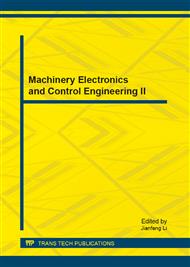p.759
p.763
p.767
p.771
p.777
p.785
p.793
p.797
p.804
Pipeline Vibration Analysis and Control for the First Booster of Ethylene
Abstract:
For existing local severe vibration problems on the pipeline system of conveying ethylene booster in ethylene cracking system of a petrochemical company, the detailed analysis by CAESARII was carried out to its pipeline system natural frequency and vibration modal; The flow of ethylene gas within the booster pipeline from the suction pipe to exhaust pipe inside including the buffer tank was analyzed using fluid analysis software--FLUENT, the pressure field and velocity field of the flow was obtained. According to the law of the suction and exhaust valve open-closed mouth, dynamic boundary conditions was set on the suction valve and exhaust valve. The ethylene flow non-steady-state analysis calculations was carried out within the pipeline from the suction tube inlet to suction valve and from the exhaust valve to the exhaust tube outlet , the law of the pressure pulsation frequency response was obtained on the suction pipe inlet and the exhaust pipe outlet. The results show that ethylene gas pipeline pressure pulsation frequency response was basically equal to the frequency of the suction and exhaust valve open-closed mouth; The actual pipe vibration modals of the pipeline system on the scene and the pipeline vibration modals a few corresponding to the natural frequencies of the pipeline system close to the pulsation frequency in flow pressure are very similar, indicating that the vibration of the pipeline system is due to the pressure pulse frequency of the ethylene gas internal pipeline close to the natural frequency of the local pipeline, caused due to local resonance. Changing the form of hangers in vibration system can change the natural frequency of pipeline to avoid resonance. Tube fluid dynamic pressure caused by the stress of the pipeline is limited and will not cause damage to the tube material. Mass flow rate does not match with the tube diameter will cause too large flow velocity, the inertia force caused by the larger on the suction valve and exhaust valve before and after, resulting in the forced vibration of the compressor body.
Info:
Periodical:
Pages:
777-784
Citation:
Online since:
March 2013
Authors:
Price:
Сopyright:
© 2013 Trans Tech Publications Ltd. All Rights Reserved
Share:
Citation:


